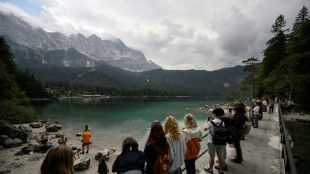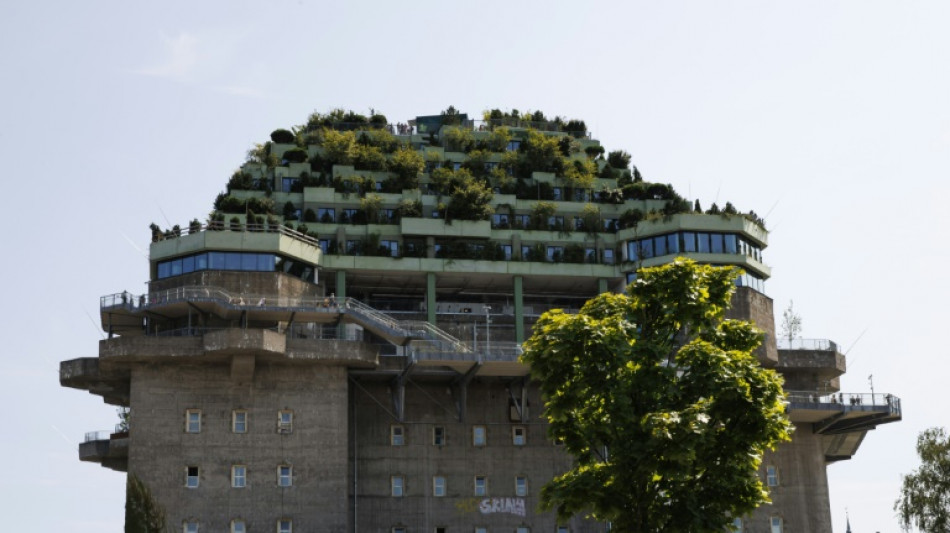
-
 UK vows to speed up asylum claims as hotel protests spread
UK vows to speed up asylum claims as hotel protests spread
-
Head, Marsh, Green hit centuries as Australia make 431-2 in 3rd South Africa ODI

-
 Pujara announces retirement from Indian cricket
Pujara announces retirement from Indian cricket
-
Bird call contest boosts conservation awareness in Hong Kong's concrete jungle

-
 Kneecap to play Paris concert in defiance of objections
Kneecap to play Paris concert in defiance of objections
-
Indonesian child's viral fame draws tourists to boat race

-
 LAFC's Son, Whitecaps' Mueller score first MLS goals
LAFC's Son, Whitecaps' Mueller score first MLS goals
-
Australian quick Morris out for 12 months with back injury

-
 Son scores first MLS goal as LAFC draw 1-1 with Dallas
Son scores first MLS goal as LAFC draw 1-1 with Dallas
-
India's Modi dangles tax cuts as US tariffs loom

-
 Indonesia turns down ear-splitting 'haram' street parties
Indonesia turns down ear-splitting 'haram' street parties
-
North Korea test-fires two new air defence missiles: KCNA

-
 Sinner, Sabalenka chasing rare repeats as US Open gets underway
Sinner, Sabalenka chasing rare repeats as US Open gets underway
-
Venezuela rallies militia volunteers in response to US 'threat'

-
 Musk's megarocket faces crucial new test after failures
Musk's megarocket faces crucial new test after failures
-
UK's mass facial-recognition roll-out alarms rights groups

-
 Home hope Henderson, Aussie Lee share Canadian Women's Open lead
Home hope Henderson, Aussie Lee share Canadian Women's Open lead
-
Fucsovics holds off van de Zandschulp for ATP Winston-Salem crown
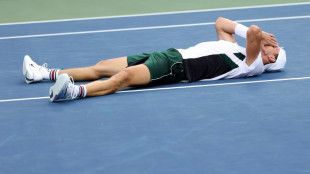
-
 Fleetwood, Cantlay share PGA Tour Championship lead
Fleetwood, Cantlay share PGA Tour Championship lead
-
Trump Holds the Rescheduling Key: Will Marijuana Reform Follow the Patient's Right to Try Path?

-
 Argentina stun All Blacks with historic 29-23 upset win
Argentina stun All Blacks with historic 29-23 upset win
-
France begin Women's Rugby World Cup with hard-fought win over Italy

-
 Barca complete late comeback win as Atletico drop more points in Liga
Barca complete late comeback win as Atletico drop more points in Liga
-
Alcaraz targeting 'unbelievable' Sinner at US Open

-
 Swiatek plays down favorite status ahead of US Open
Swiatek plays down favorite status ahead of US Open
-
De Bruyne strikes in Napoli's strong start as Modric's Milan sank by Cremonese

-
 Springboks back in contention after win - Erasmus
Springboks back in contention after win - Erasmus
-
Cirstea downs Li to claim WTA Cleveland crown

-
 Nigeria says killed over 35 jihadists near Cameroon border
Nigeria says killed over 35 jihadists near Cameroon border
-
Sri Lanka ex-president rushed to intensive care after jailing
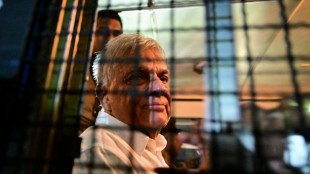
-
 Russia claims more Ukraine land as hopes for summit fade
Russia claims more Ukraine land as hopes for summit fade
-
Atletico still without Liga win after Elche draw

-
 Schell shock as six-try star leads Canada to 65-7 World Cup hammering of Fiji
Schell shock as six-try star leads Canada to 65-7 World Cup hammering of Fiji
-
Gyokeres scores twice but injuries to Saka, Odegaard sour Arsenal rout of Leeds

-
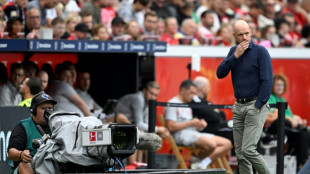 Leverkusen stumble in Ten Hag Bundesliga debut, Dortmund collapse late
Leverkusen stumble in Ten Hag Bundesliga debut, Dortmund collapse late
-
Man City revamp rocked by Spurs, Arsenal thrash Leeds
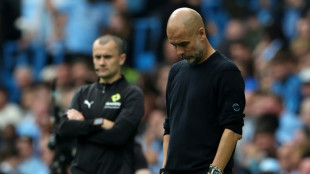
-
 Gyokeres scores twice as Arsenal rout Leeds
Gyokeres scores twice as Arsenal rout Leeds
-
De Bruyne strikes in Napoli's strong start to Scudetto defence at Sassuolo

-
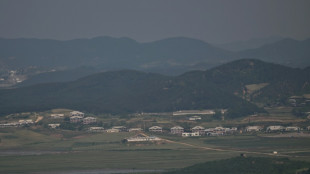 Seoul says fired warning shots after North Korean troops crossed border
Seoul says fired warning shots after North Korean troops crossed border
-
McGhie the hat-trick heroine as Scotland overwhelm Wales in Women's Rugby World Cup

-
 'It's in my DNA': Williams relishes US Open return at 45
'It's in my DNA': Williams relishes US Open return at 45
-
Portugal suffers new wildfire death as Spain beats back blazes
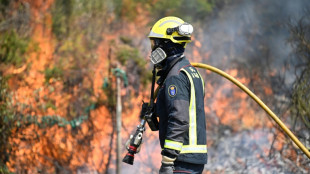
-
 Pollard steers Springboks to victory over Wallabies
Pollard steers Springboks to victory over Wallabies
-
Aubameyang stars as Marseille end chaotic week on five-goal high

-
 US govt wants migrant targeted in crackdown deported to Uganda: lawyers
US govt wants migrant targeted in crackdown deported to Uganda: lawyers
-
Man City revamp rocked by Spurs, Villa beaten at Brentford
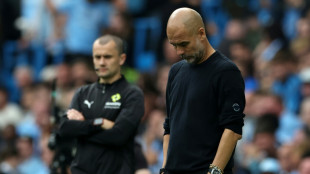
-
 Philipsen wins Vuelta a Espana opening stage
Philipsen wins Vuelta a Espana opening stage
-
Crystal Palace's Eze returns to boyhood club Arsenal

-
 Reyna trades Dortmund for Gladbach chasing 'new chapter'
Reyna trades Dortmund for Gladbach chasing 'new chapter'
-
Leverkusen stumble in Ten Hag Bundesliga debut
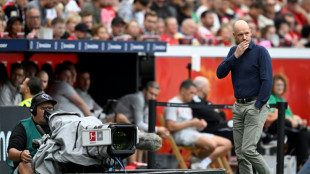

Hamburg transforms its huge 'ugly wart' Nazi bunker
A huge former Nazi bunker in Hamburg has been transformed into a leisure complex filled with restaurants, a concert hall and roof terraces where visitors can relax in an orchard.
It is a novel answer to the question that has long vexed Germany -- what to do with former Nazi sites that are too complex to demolish?
The five storeys of the imposing concrete structure in Hamburg's St Pauli district, one of the largest bunkers in the world, can now be accessed via steps bolted onto the outside of the building.
The complex includes a hotel with 134 bedrooms, a 2,000-seat concert space and allotment plots for locals.
"The idea of raising the height of the building with greenery was to add something peaceful and positive to this massive block left over from the Nazi dictatorship," said Anita Engels from the Hilldegarden neighbourhood association, which supported the project.
Almost 40 metres (130 feet) tall and weighing 76,000 tonnes, the St Pauli bunker has exterior walls 2.5 metres thick and a roof consisting of 3.5 metres of reinforced concrete.
The building was one of eight "flak towers" constructed by Hitler during the Third Reich, with anti-aircraft guns standing where the apple trees now grow.
- Triple threat -
Three were in Berlin, two in Hamburg and three in Vienna.
"They protected the government quarter in Berlin, the port facilities in Hamburg and the historic centre that Hitler loved in Vienna," said historian Michael Foedrowitz.
The huge structures also functioned as shelters, as well as serving as a kind of architectural "propaganda" about the power of Hitler's rule, he said.
The flak tower at Berlin zoo is the only one that has been completely destroyed, since the explosives required would pose too big a risk for the heavily populated areas where the others stand.
After the war, the bunker in St Pauli was initially used as accommodation for homeless people before being transformed into office space for media and advertising companies in the 1950s.
The lower floors have more recently been home to a popular nightclub, a radio station and a climbing gym.
"But that didn't lead to the story of the bunker being told, to critical reflection. There wasn't even a sign at the entrance," said Engels.
As part of the renovation project launched in 2019 by the city of Hamburg and private investors, Hilldegarden has been helping to bring the history of the building back to life.
The association has collected testimonies from people who lived in the bunker during and after the war as well as records of the hundreds of forced labourers who built the structure in just 300 days in 1942.
On the first floor, an exhibition now presents the history of the site.
"In Berlin, up to 60,000 civilians were counted taking refuge in a pair of towers designed to hold around 30,000 people -- the size of a small town," historian Foedrowitz said.
- Massive bombing -
The St Pauli complex housed up to 25,000 civilians including during the Allied bombing raids of Operation Gomorrah in July 1943, which devastated Hamburg.
Brigitte Schulze, a 72-year-old pensioner who came to visit the refurbished bunker, said she felt it was "good to keep this history alive, especially as the witnesses are disappearing".
"And the setting is pleasant, with the park and the trees," she said.
Schulze lives near Hamburg but it had never occurred to her before to visit the building, which she described as "just an ugly wart".
She was one of thousands of visitors to the new complex in its first month.
A few years ago, Hamburg's second flak tower was converted into a mini power station producing electricity from renewable sources.
In Berlin, the towers in Friedrichshain and Humboldthain have been buried beneath unassuming artificial hills in two city parks.
P.Silva--AMWN
